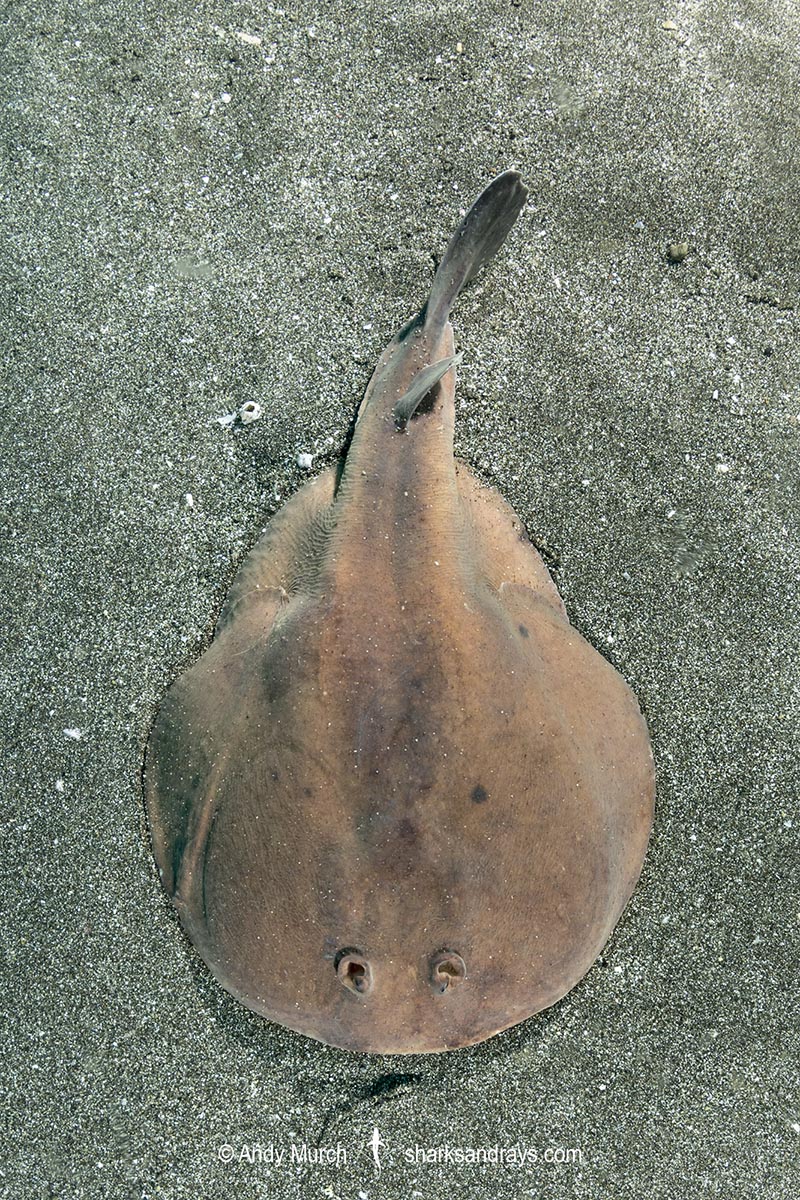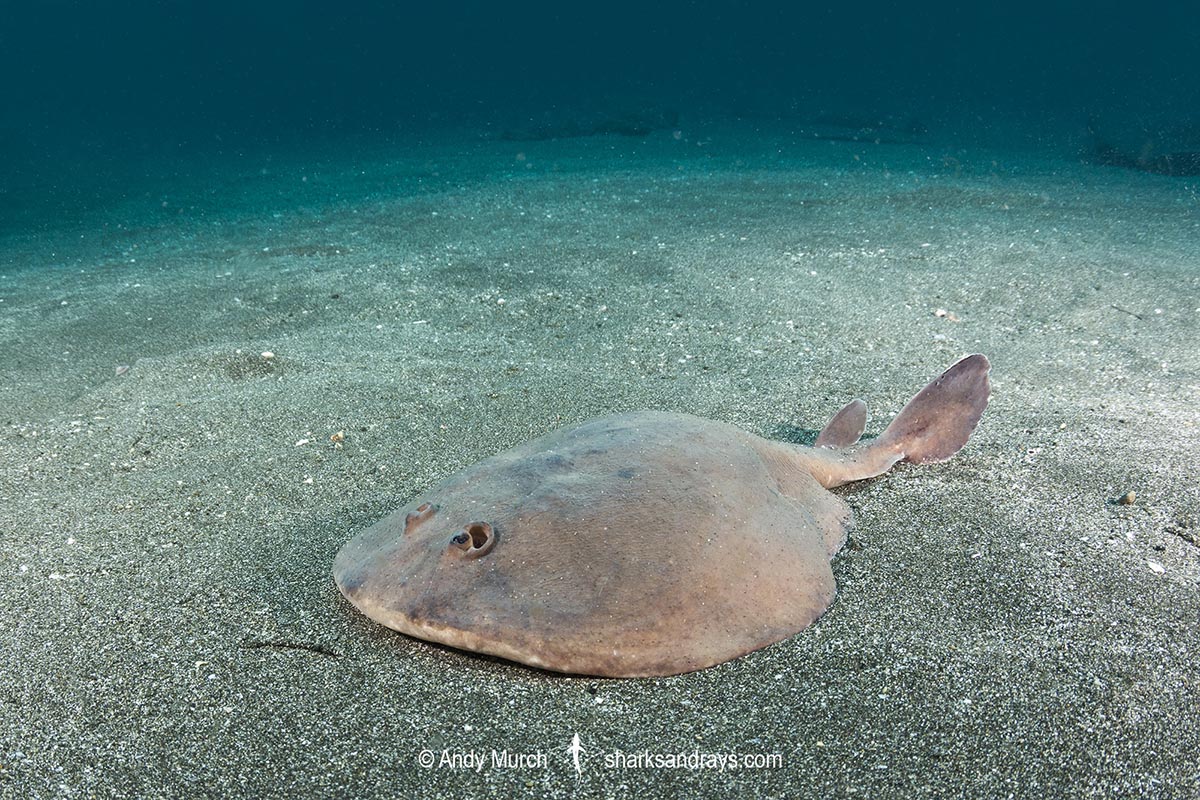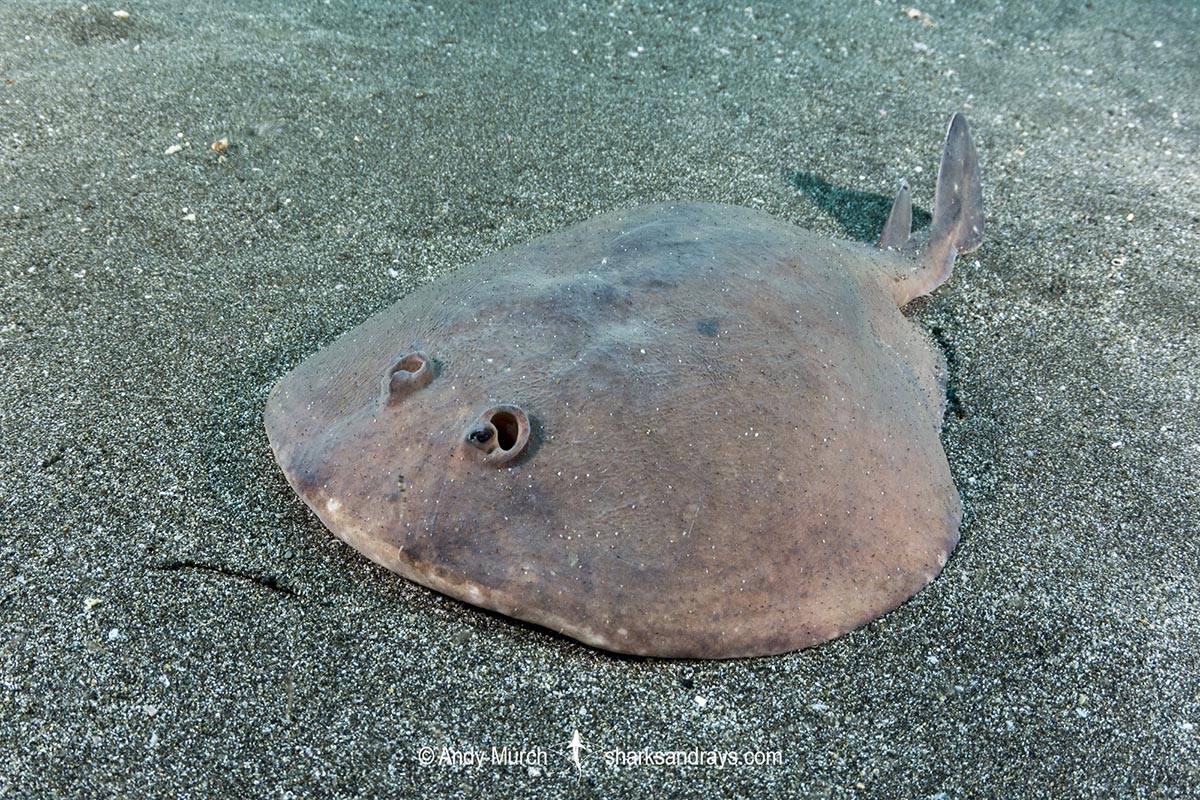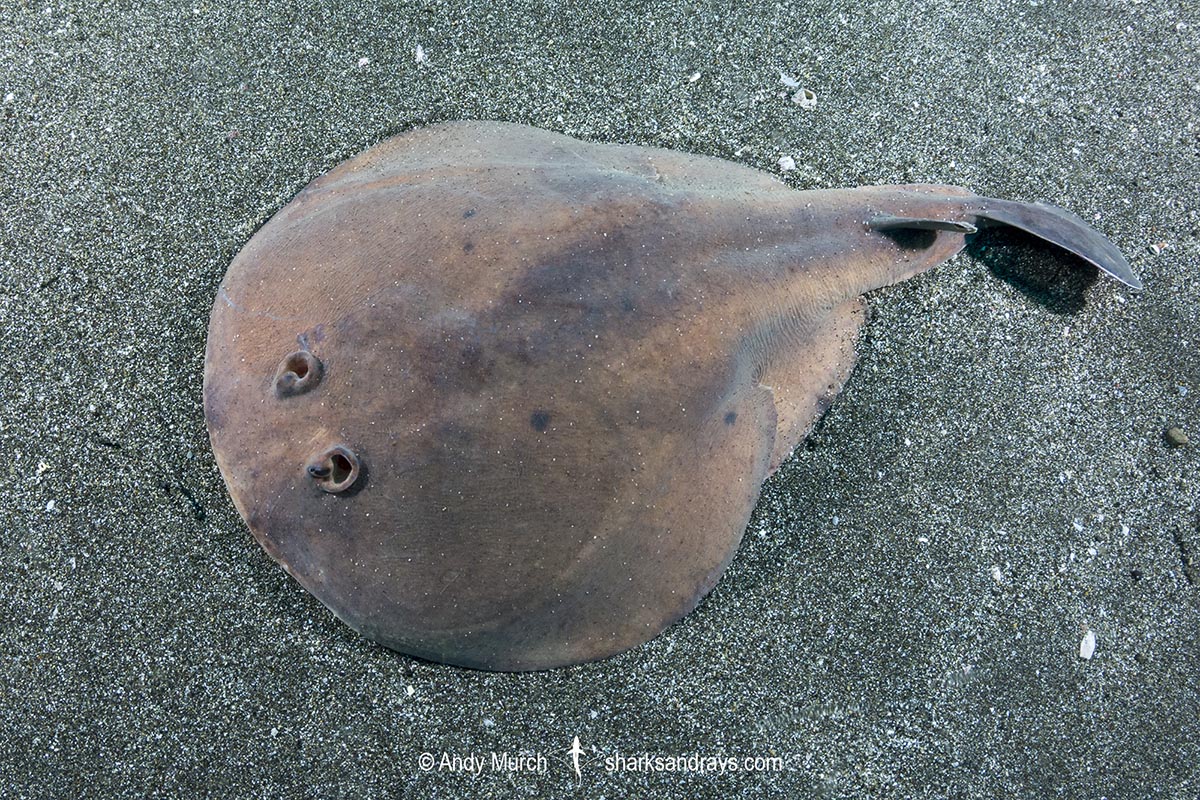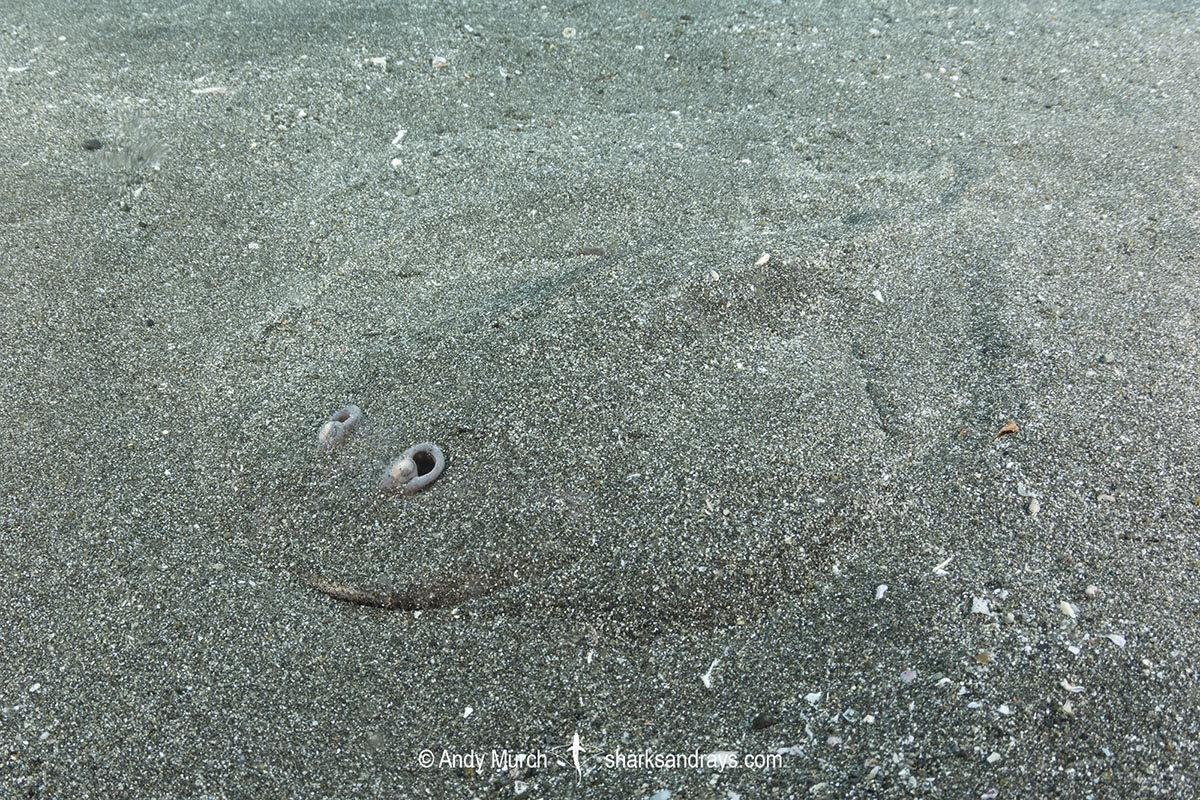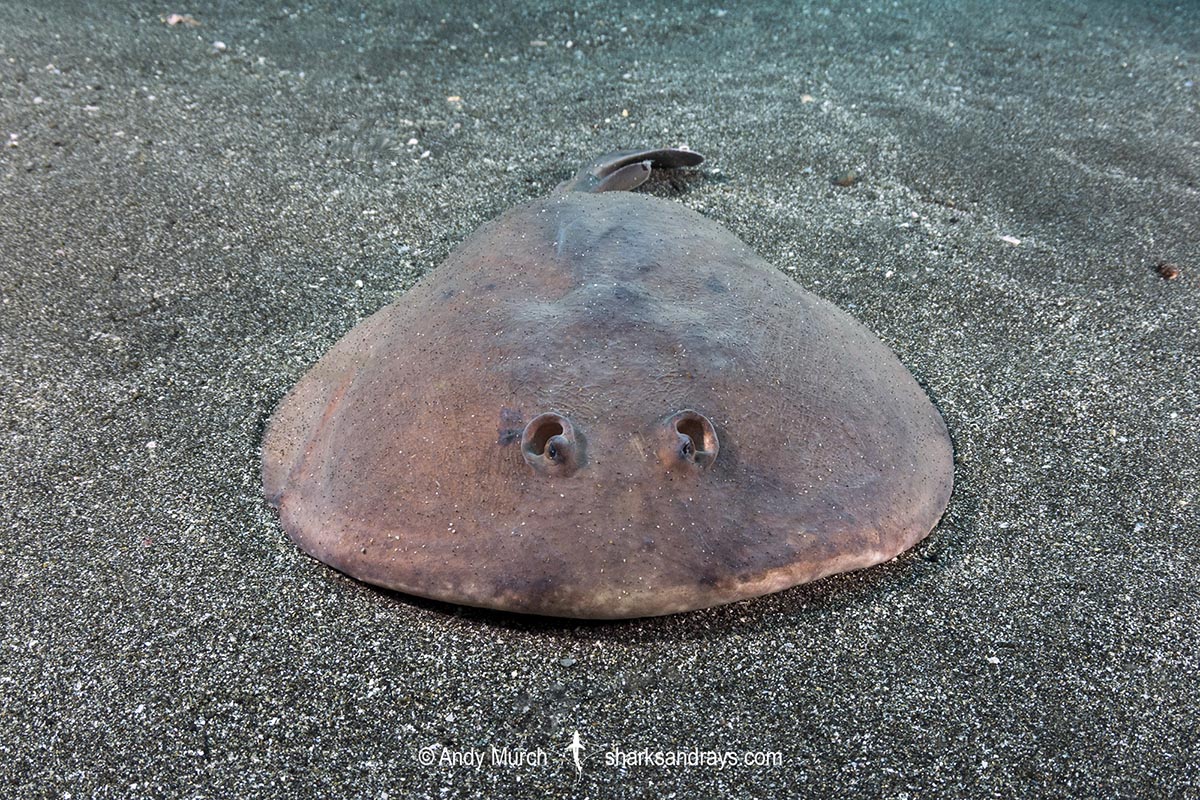Common names
Japanese Sleeper Ray.
Binomial
Narke japonica.
Synonyms
Torpedo japonica.
Identification
A small sleeper ray with a teardrop-shaped body. Disc sub-circular. Snout short, tip weakly convex. Pectoral fin apices evenly rounded. Eyes partially encircled by much larger spiracles. Spiracles circular. Spiracular rim weakly raised, with no papillae. Nostrils with circular incurrent openings and narrow nasal flaps. Nasal curtain short, with deep central groove.
Pelvic fins broad. Tail broad based. Pronounced caudal keel. Single rounded dorsal fin, origin posterior to pelvic fin. Caudal fin much larger than dorsal fin. Upper caudal margin straight. Ventral and posterior caudal margin broadly convex.
Colour
Dorsum light brown to dark reddish brown, sometimes with dusky purple shadowing. Small dark blotched occasionally present. Ventrum white.
Size
Maximum length 37cm. Size at birth 8cm.
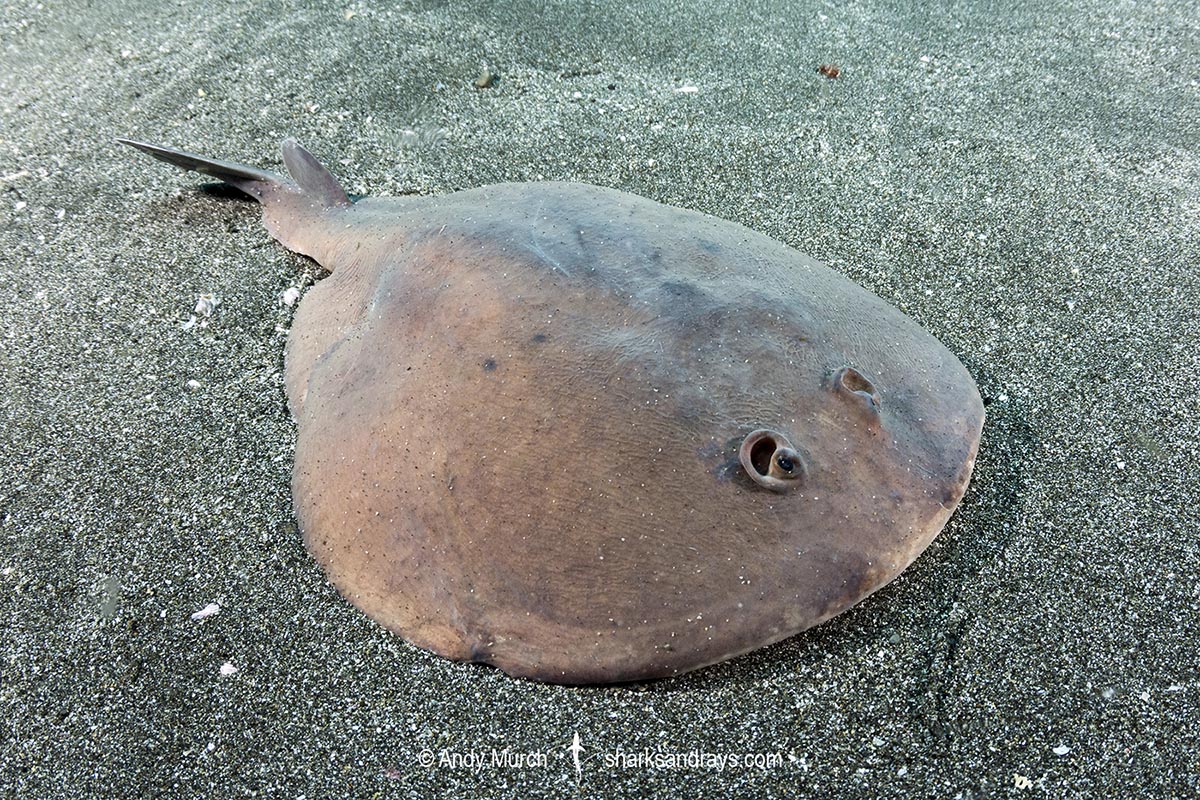
Conservation Status
VULNERABLE
The Japanese Sleeper Ray (Narke japonica) is a bycatch component in trawl, gillnet, and line fisheries. In japan it is discarded, but in Taiwan and China it is ground into fish meal. Although no species specific catch information is available, overall declines in skate and ray numbers within the region indicate that the Japanese sleeper ray has likely declined by 30-49%.
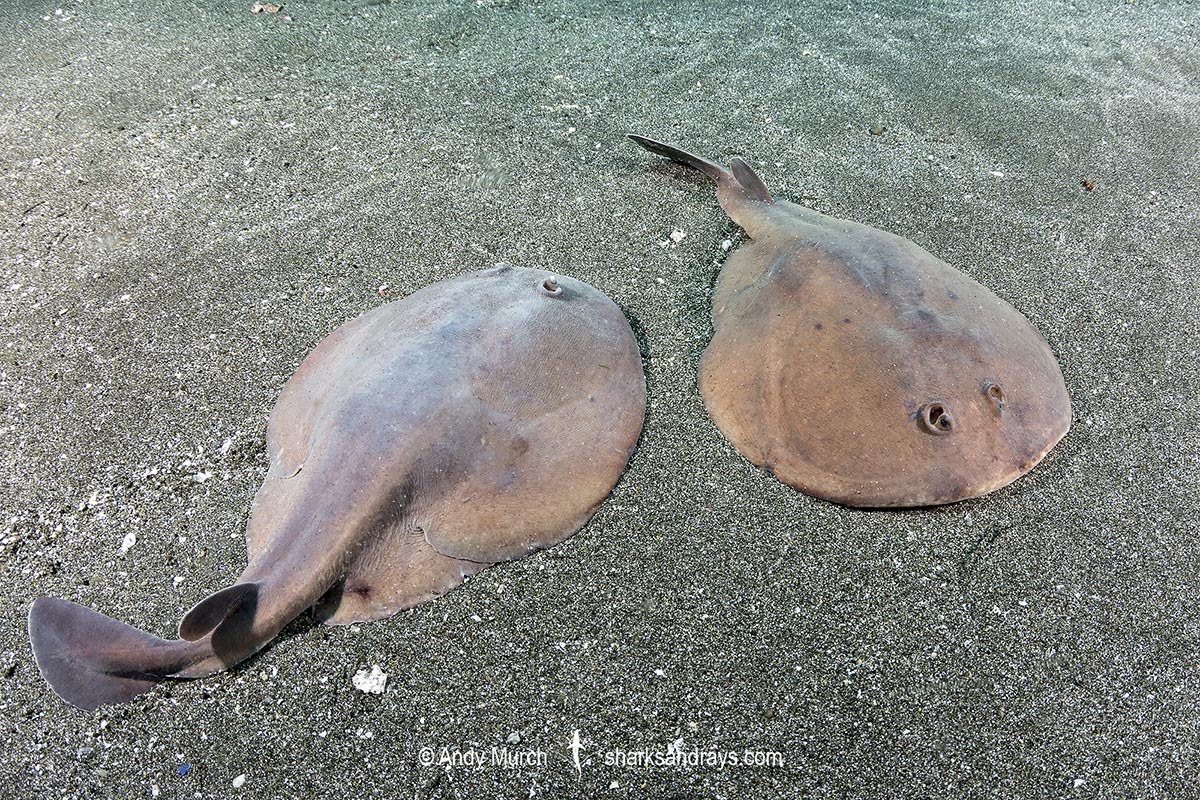
Habitat
Warm temperate to tropical seas. Benthic on soft bottoms and gravel at 12-140m.
Distribution
Northwest Pacific. Found from Japan to China, including South Korea and Taiwan.
Reproduction
Aplacental viviparous. Litter size 1-9.
Diet
Diet unknown.
Behavior
Poorly known. Capable of emitting mild electric shocks; probably to stun prey and as a defensive tactic.
Reaction to divers
Easy to approach. Generally remains motionless when approach.
Diving logistics
The Japanese sleeper ray is rarely encountered by divers. It is most common at dive sites in the southern half of Japan (e.g. along the south coast of Honshu) and around Taiwan.
What’s new
View our full list of updates
Similar species
Spot-tail Sleeper Ray Distinguishable by paired pale blotches on posterior disc, above pelvic fins, and at tail base.

